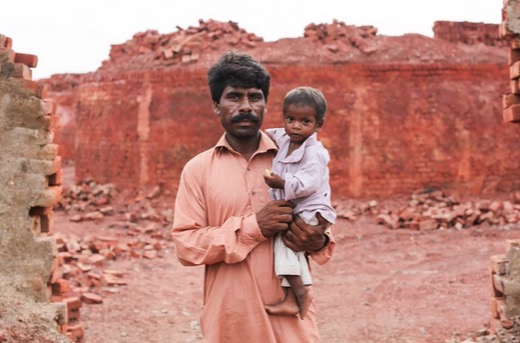
The HONY Effect: Making a Difference, One Story at a Time
A photo. A caption. And a story to tell. Everyone has these three elements at their fingertips, but how did one guy’s photo lead to the freedom of bonded brick workers in Pakistan, a humanitarian issue no one in the West gave a crap about until now?
Brandon Stanton, the man behind the camera of Humans of New York has perfected the formula for getting strangers to tell him their most intimate stories. Something usually reserved for shrinks and pastors. You may remember his post that went viral about the young boy who was scared for his future due to his homosexuality; a story that caught the attention of the likes of Ellen Degeneres and Hillz Clinton. Pulling on the heartstrings of almost fifteen million fans around the world, Stanton turns each Facebook post into a touching insight into the mind of everyday people. HONY has become a storytelling platform, inciting important discussions, touching empathy, and significant change. As Spidey’s uncle once said: “With great power, comes great responsibility”.
“I was walking to court to attend a hearing against a kiln owner when suddenly I was surrounded by a group of men. …
Posted by Humans of New York on Sunday, August 16, 2015
Recently, his work has expanded the borders of the Big Apple and into the Middle East, bringing HONY to Pakistan and Iran. The photos and stories of the enslaved workers in the brick kilns of Pakistan have gone viral. The devastating stories of families working to pay off exorbitant debts in the exploitative kiln industry catalysed a huge movement of internet citizens becoming humanitarians. But the question at hand here is thus: How did sharing photos of Pakistan’s most invisible people generate such a response from a so-called generation of slacktivists?
Before this fundraiser, Fatima had exhausted her financial resources in the struggle against bonded labor to the point…
Posted by Humans of New York on Tuesday, August 18, 2015
The HONY brand has built an empire of followers through the simple act of sharing a vignette of a stranger’s vulnerability. In a media landscape that fosters an audience of skeptics and pessimists, Stanton has done something that generates what every millennial is craving: hope.
After losing his job in finance in Chicago, Brandon Stanton went on a mission to capture the zeitgeist of America through portraits of people. He landed in New York in 2010 and worked tirelessly everyday without pay, capturing thousands of photos of strangers on the street to upload to his personal Facebook. His initial interactions with the public of the concrete jungle were awkward, to say the least. He got yelled at, he made people nervous, and people were uncomfortable. Men thought he was a weirdo, and women thought he was a creep. It was only after he’d stopped thousands of passersby in the street and garnered a cult Facebook following that he became more comfortable with his interactions and his subjects began to trust him and share their stories. The HONY we see today is a reflection of getting beaten down time and time again and persevering despite it.
In an interview in 2014, Stanton said, “There is no way I’m the best photographer in the world, no way that I’m the best journalist in the world, but I have approached over 10,000 people on the streets of what is stereotypically… one of the colder cities in the world and have asked them for their photograph. So I’m thinking by about this time I might be just about the best in the world at stopping random people on the street and getting them to let me take their photograph.”
The media may like to depict us young’uns as apathetic, entitled, self-righteous slackers, and they may be right sometimes. Netflix is a thing, after all. But we’re also a much more socially-aware bunch that have a much greater sense of empathy and affinity for others ingrained into us thanks to social media. Never before have the lives of anyone and everyone been this accessible. And never before have we wanted to share as much about ourselves as now.
Today, HONY has fundraised hundreds of thousands of dollars for campaigns, whether it be providing donations for Hurricane Sandy victims, or funding school kids in Brooklyn getting an excursion to Harvard, or even the unintentional call-to-action of support for a woman who shared her story of having Hepatitis C, Stanton has staked himself as a trusted personality in the media to an audience who are skeptical of the media. He’s not shoving an agenda down our throat; he’s simply sharing someone else’s story.
“I left an abusive relationship and I have nowhere to go. I have Hepatitis C, so no one is willing to take me in. I…
Posted by Humans of New York on Thursday, August 13, 2015
When someone comes along and gives us a glimpse into the humanity of a stranger, packaged together with a portrait and a bite-sized quote to digest on our commute home, government intervention may not be at our disposal, but a few dollars out of our pockets is. This is the Brandon Stanton effect.
Have hope for the future. The kids are alright.

